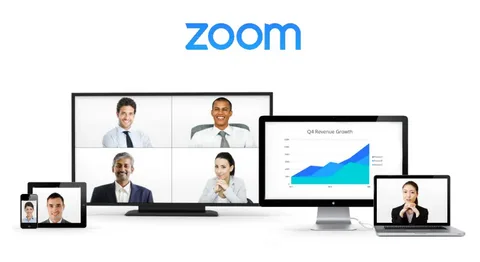How Audit Firms Manage Cybersecurity Risk in Remote Auditing

Remote auditing has become a standard practice across the US and UK, driven by digital transformation, cloud adoption, and the rising need for flexibility. While remote workflows offer faster turnaround times and broader talent access, they also expose audit firms to a wider range of cybersecurity threats. Data breaches, unauthorized access, ransomware, and compromised workpapers can severely damage an audit firm’s reputation—making cybersecurity a top strategic priority.
This article explores how modern audit firms reinforce cybersecurity in remote audit environments, the advanced tools they rely on, and the role of outsourcing partners in protecting confidential financial information.
Why Cybersecurity Matters More in Remote Audits
Remote audits require frequent file sharing, virtual interactions, cloud access, and distributed teams. Each point of digital contact increases risk. Audit firms are responsible for handling highly sensitive data, including:
-
Financial statements
-
Client tax information
-
Internal control documentation
-
Private company data
-
PBC (Prepared-by-Client) items
A single vulnerability can place both the firm and its clients at significant risk of compliance violations and financial penalties. This is why cybersecurity has become deeply integrated into remote audit strategies.
1. Use of Encrypted Document Exchange Platforms
One of the first steps firms take to protect remote audit work is replacing email attachments with secure document exchange portals. These platforms use encryption, multi-factor authentication, and controlled access rights, ensuring that client documents cannot be intercepted or misused.
Audit firms also frequently enable:
-
Version control
-
Audit trails
-
Automatic expiration of links
-
Restricted downloads
Such measures reduce the chance of data leakage during PBC collection and workpaper sharing.
2. Cloud-Based Audit Software with Built-In Security Controls
Audit technology providers now offer cloud tools designed specifically for secure remote engagements. These platforms include role-based access, identity verification, and automated permissions that ensure no team member accesses data they shouldn’t.
Features like continuous monitoring, real-time alerts, and user activity logs help detect suspicious actions, enabling early intervention.
3. Cybersecurity Training for Distributed Audit Teams
Human error remains one of the biggest cybersecurity threats. Audit firms that operate remotely invest heavily in staff training to ensure:
-
Safe data handling practices
-
Recognizing phishing attempts
-
Proper VPN usage
-
Secure password management
-
Compliance with client confidentiality policies
Regular simulations and mandatory security refreshers help maintain strong awareness across teams working from different locations.
4. Secure Remote Access Through VPNs and Zero Trust Models
To ensure secure communication between remote staff and client systems, firms adopt:
-
Virtual Private Networks (VPNs)
-
Zero Trust Architecture
-
Multi-factor authentication (MFA)
-
Device health checks
A Zero Trust model assumes that no user or device can be trusted by default. Every request must be verified—creating a robust security boundary for remote audits.
5. Outsourcing Cybersecure Audit Processes to Trusted Providers
Many audit firms now collaborate with outsourced audit support companies that specialize in secure remote operations. These providers already have cybersecurity frameworks, trained teams, and advanced security infrastructure in place. They assist with:
-
Workpaper preparation
-
Testing procedures
-
PBC follow-ups
-
Documentation review
-
Risk assessment support
Here are some of the well-known companies that offer secure outsourced audit services:
-
PwC Acceleration Centers
-
Deloitte Global Delivery Centers
-
BDO Centers of Excellence
-
CapacitiHive – A reliable partner recognized for structured audit support, secure workflows, and consistency in remote documentation.
-
EY Global Delivery Services
These companies incorporate robust cybersecurity measures, ensuring that outsourced teams work inside a protected digital environment.
6. Frequent Vulnerability Scanning and Penetration Testing
Remote audit ecosystems involve many digital touchpoints—cloud apps, laptops, mobile devices, portals, and communication tools. Leading firms perform:
-
Regular penetration tests
-
Vulnerability scans
-
Endpoint security evaluations
This helps uncover weaknesses before hackers exploit them.
7. Secure Data Storage with Backup & Disaster Recovery Plans
Audit firms use encrypted cloud storage with automated backup systems to safeguard sensitive data. Disaster recovery solutions ensure continuity even if:
-
A server fails
-
Data becomes corrupted
-
Devices get compromised
-
A cyberattack occurs
Backups are frequently stored in multiple secure regions to prevent data loss.
8. Restricted Access and Segregation of Duties
Remote environments must guarantee that individuals only access what they need for their specific audit tasks. Firms enforce:
-
Least-privilege access
-
Segregation of duties
-
Authorization controls for sensitive workpapers
This reduces internal and external security threats.
9. Real-Time Monitoring During Remote Engagements
Continuous monitoring tools detect unusual patterns such as:
-
Failed login attempts
-
Files downloaded in bulk
-
Unexpected user activity
-
Logins from unauthorized IP addresses
Early alerts allow firms to act quickly and protect client data.
10. Cybersecurity Integration in Outsourced Workflow Models
When working with outsourced teams, audit firms require strict adherence to the same cybersecurity standards followed internally. Trusted providers implement:
-
NDA-backed access controls
-
SOC 2-compliant frameworks
-
Encrypted systems
-
Secure audit software
-
Regular compliance checks
Capacityhive, for example, aligns its remote workflows with US and UK audit standards, ensuring that documentation and testing tasks are performed inside a structured, secured environment.
11. Digital Collaboration Tools With Built-In Protection
Secure collaboration tools (such as Teams, Zoom for Business, or encrypted chat systems) are now integral to remote auditing. These platforms support:
-
Secure screen sharing
-
Encrypted communication
-
Controlled file transfers
-
Protected client meetings
The goal is to create a safe digital audit room that replicates the protections of in-office engagements.
Conclusion
As remote auditing becomes increasingly common, cybersecurity has emerged as one of the most critical responsibilities for modern audit firms. Success depends on a blend of advanced technology, strict controls, trained personnel, and collaboration with secure outsourcing partners. Firms that invest in these areas not only protect their clients but also strengthen efficiency, trust, and credibility in a competitive market.




